5 Best Exercises For Back Pain Relief [2025]
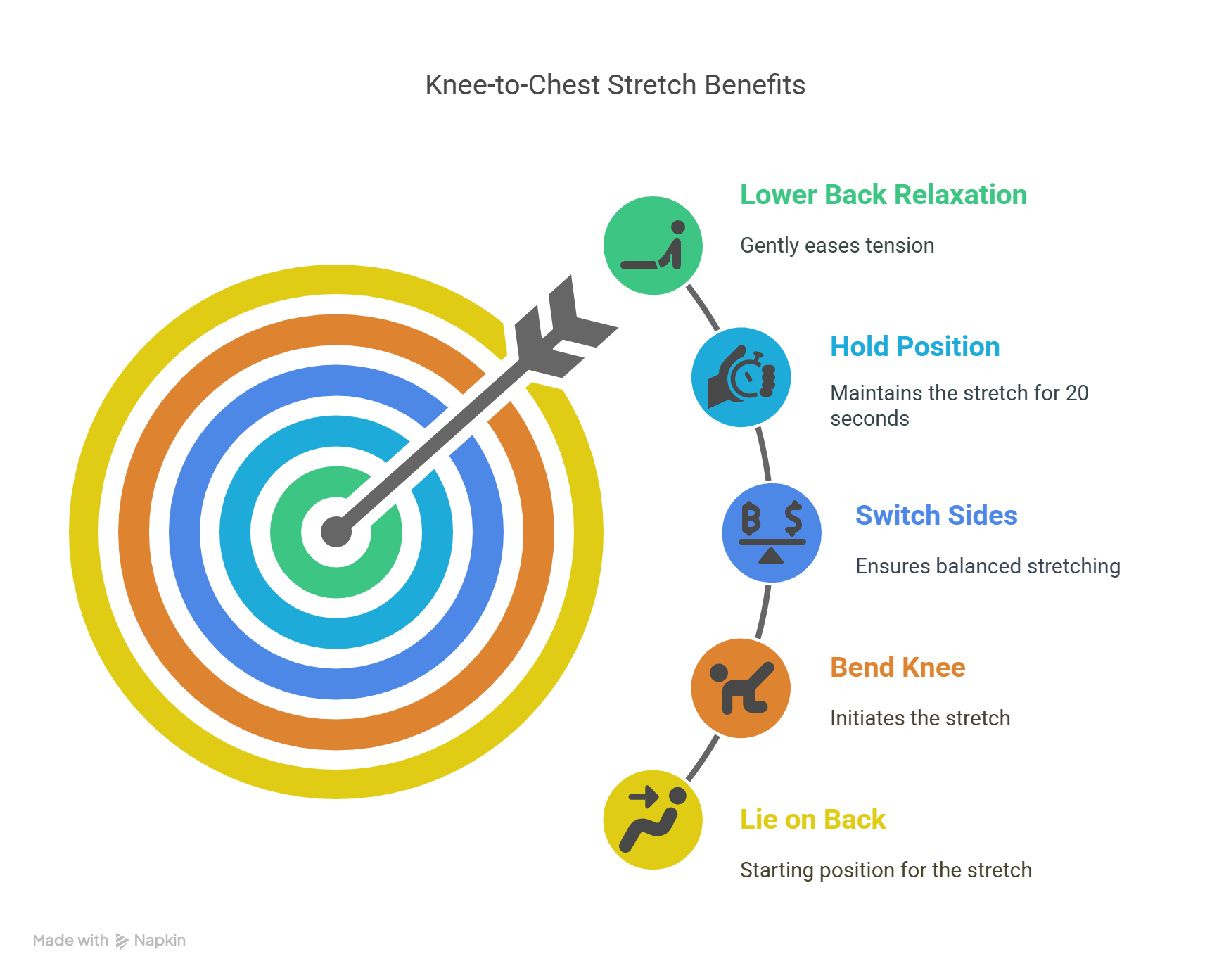
Why Back Pain Affects So Many People
Back pain is one of the most common reasons people visit the doctor or miss work. It affects people of all ages, but it becomes more frequent with age. In this articel we added a back pain stretches video.
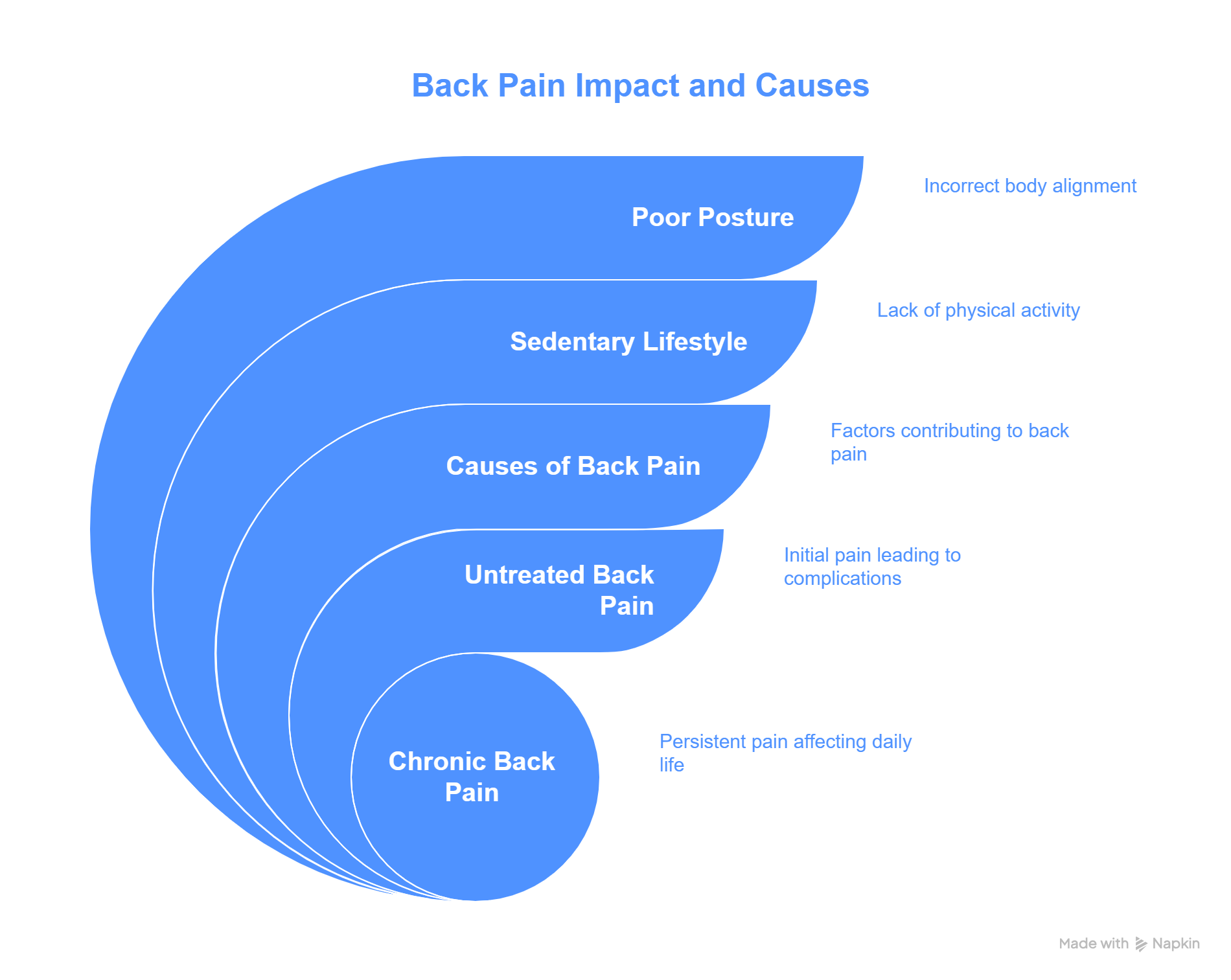
Causes of Back Pain
-
Sedentary lifestyle
-
Poor posture
-
Muscle strain
-
Spinal degeneration
-
Stress and tension
Even mild back pain can feel overwhelming. It limits movement and drains energy. Left untreated, it can become chronic and affect sleep, focus, and emotional well-being.
According to the CDC, nearly 65 million Americans report recent back pain, and 16 million adults experience chronic back pain that limits function in daily life. Source
This growing concern makes safe, daily exercise one of the most important tools for recovery and prevention.
How Back Pain Stretches Video Helps Relieve Pain
Many people fear movement when they feel pain, but inactivity can make it worse. Proper exercise strengthens the muscles that support your spine, improves flexibility, and helps you heal naturally.
The Science Behind It
Exercise increases blood flow to the back. This brings oxygen and nutrients to injured tissues. It also reduces stiffness and promotes healing.
A study from the National Institutes of Health (NIH) confirms that targeted movement reduces pain severity and improves long-term outcomes for people with chronic lower back pain.
Source: NIH
Benefits of Back Pain Exercises
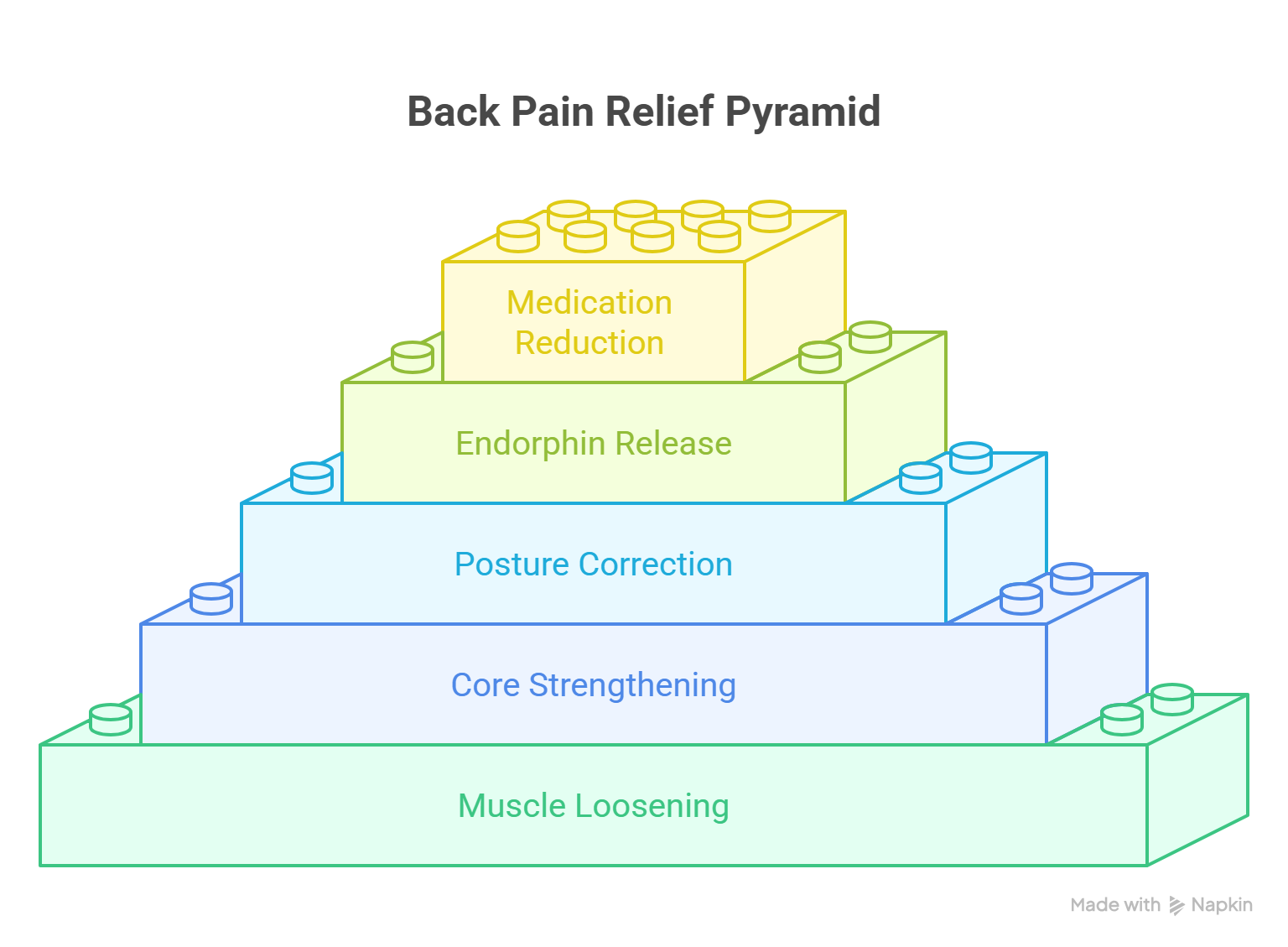
-
Loosens tight muscles
-
Builds core strength
-
Corrects posture
-
Releases endorphins (natural painkillers)
-
Reduces need for medication
Many people experience relief in just a few days. Others notice gradual improvements over several weeks. The key is consistency and proper form.
We’ll now move into specific movements designed to reduce pain and prevent flare-ups.
Safety First — What to Know Before Starting
Before beginning any exercise routine for back pain, it’s important to start smart. Doing the wrong movements can cause more harm than good.
Get Cleared by a Healthcare Provider
If your pain is severe, shooting down your legs, or tied to an injury, see a doctor or physical therapist first. They can rule out serious issues like herniated discs or spinal problems.
Listen to Your Body
-
Never push through sharp pain.
-
Mild discomfort is okay, but pain should never increase.
-
Start slowly and build over time.
Create a Safe Environment
-
Use a yoga mat or padded surface.
-
Wear clothes that allow free movement.
-
Have a chair or wall nearby for balance, if needed.
Warm Up First
A gentle 5-minute warm-up helps prevent strain. Try walking in place or shoulder rolls to increase circulation before you stretch.
A review published in the Journal of Orthopaedic & Sports Physical Therapy emphasizes that controlled, gradual movement is key to long-term relief.
Source
Now that you know how to start safely, we’ll move on to the best stretches for relieving pain and tension.
Best Back Pain Stretches Video for Relief
Stretching gently helps loosen tight muscles, restore mobility, and ease stiffness in your lower back. When done daily, these simple moves can lead to lasting relief.
1. Child’s Pose
-
Kneel on the floor, sit back on your heels.
-
Reach your arms forward and rest your forehead down.
-
Hold for 20–30 seconds.
✅ Relieves tension in the spine and hips.
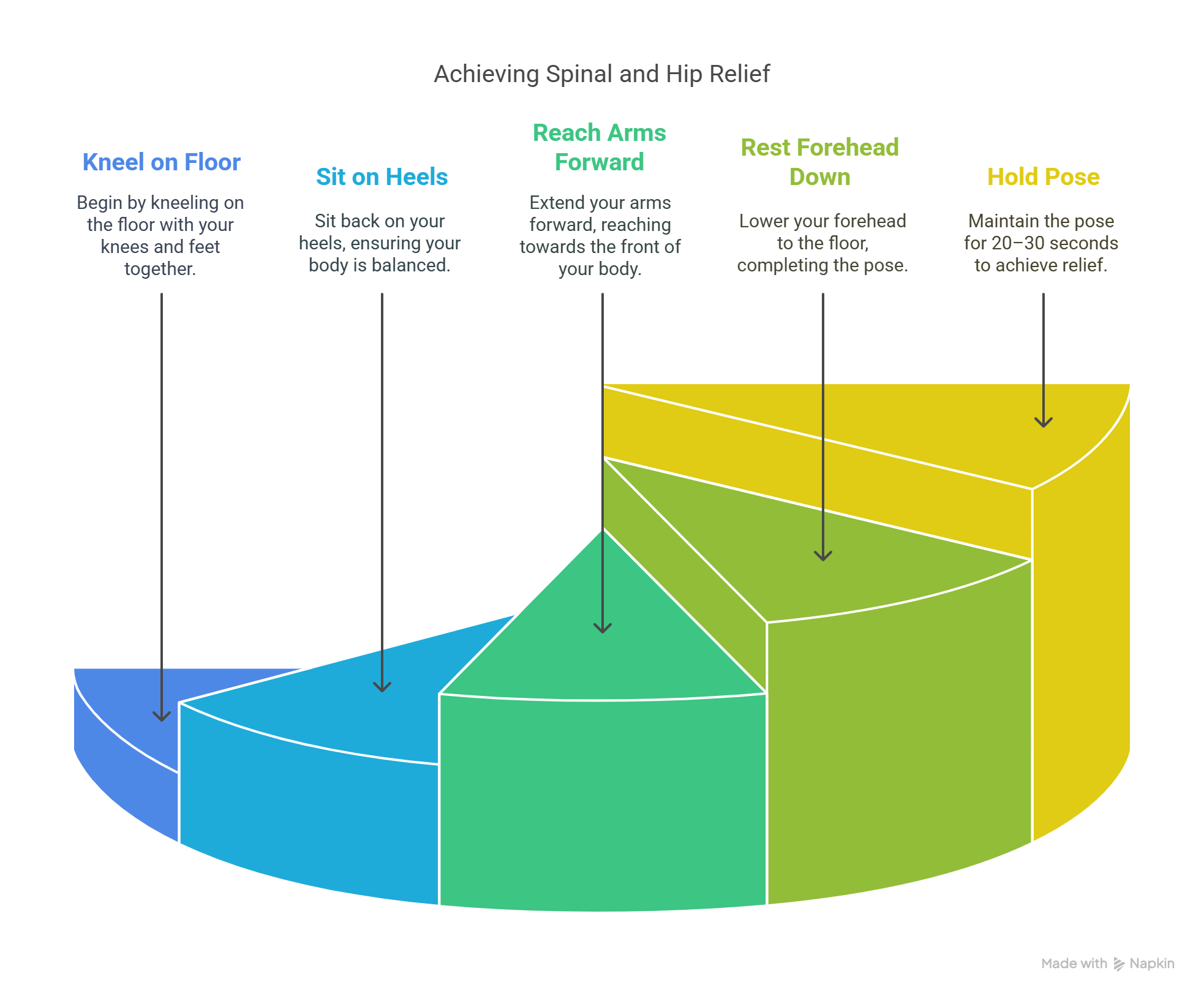
2. Knee-to-Chest Stretch
-
Lie on your back, bend one knee, and pull it toward your chest.
-
Keep the other leg flat.
-
Hold for 20 seconds, switch sides.
✅ Gently relaxes the lower back.

3. Cat-Cow Stretch
-
Start on all fours.
-
Arch your back up (cat), then drop your belly and look up (cow).
-
Repeat for 30 seconds.
✅ Improves flexibility and circulation in spinal muscles.
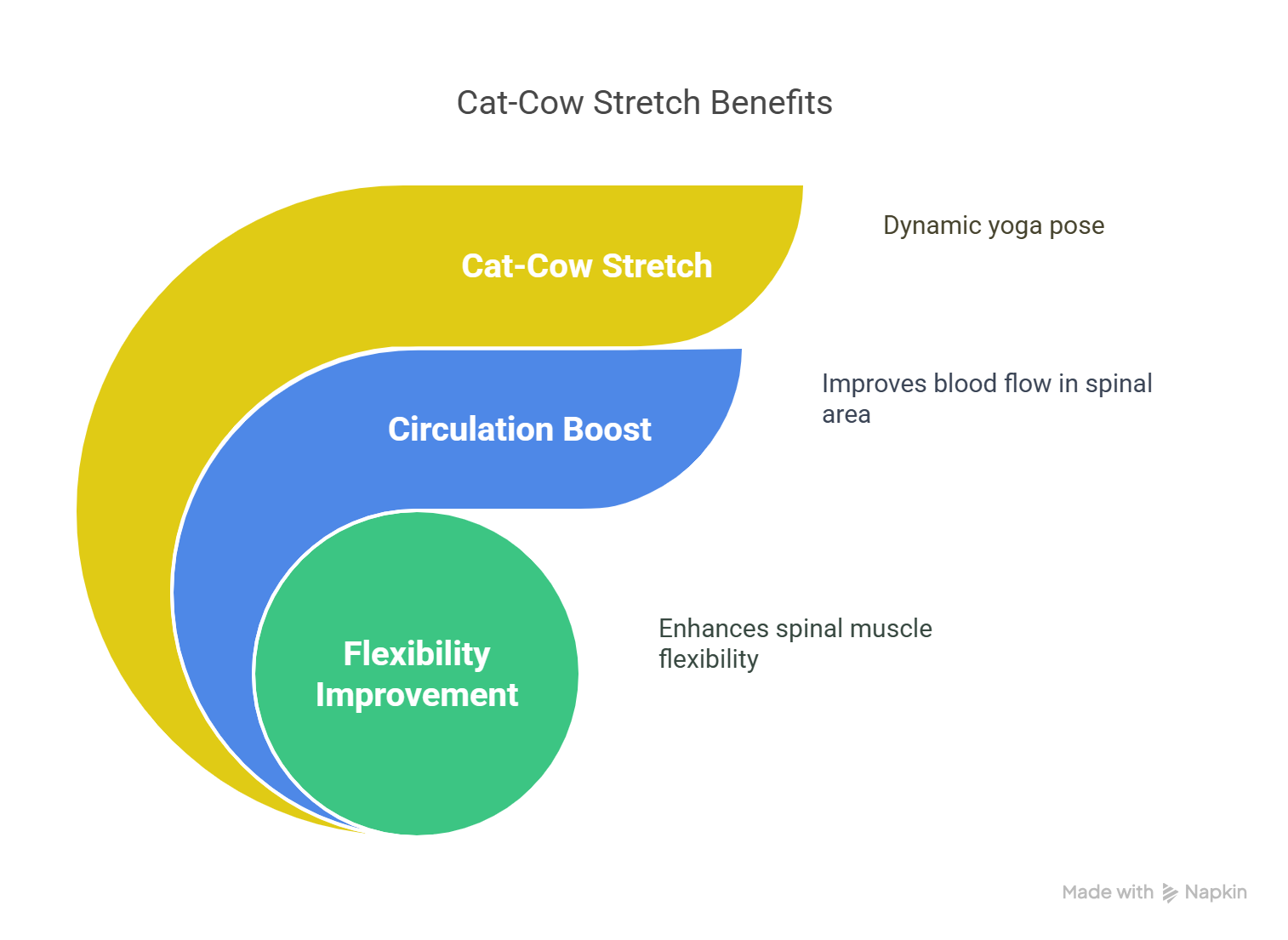
4. Pelvic Tilts
-
Lie on your back with knees bent.
-
Flatten your lower back against the floor, then release.
-
Do 10–15 reps.
✅ Strengthens the core and supports the spine.
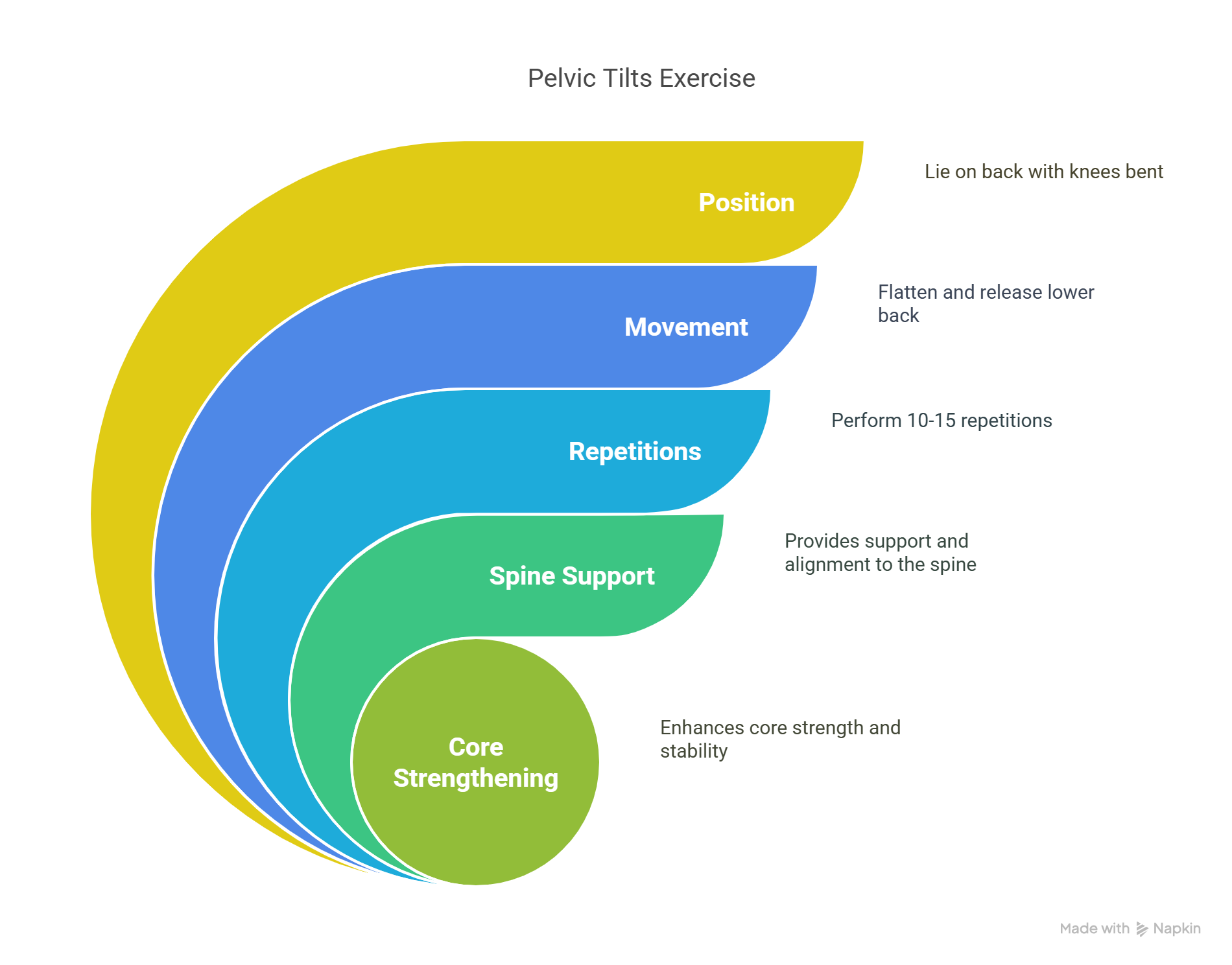
5. Seated Spinal Twist
-
Sit upright, cross one leg over the other.
-
Twist gently toward the top knee.
-
Hold for 15–20 seconds, switch sides.
✅ Relieves tightness and improves posture.
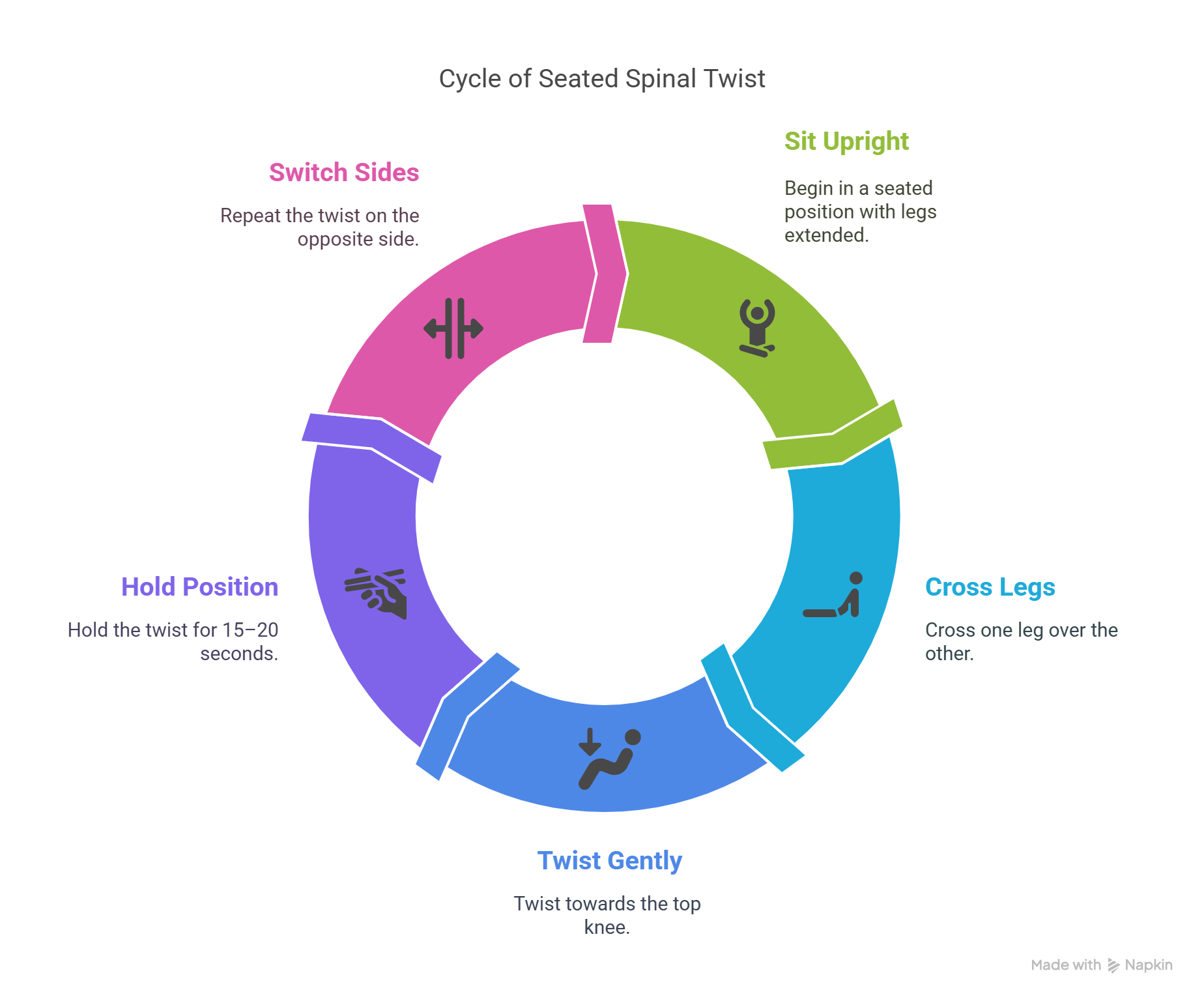
These stretches are gentle, effective, and beginner-friendly. If pain worsens or persists, stop immediately and consult a provider.
Strengthening Exercises to Support the Back
Strength isn’t just about lifting weights. It’s about building support around your spine so your back can handle everyday stress without injury.
Why Strength Matters
Weak muscles—especially in your core and hips—force your spine to do more work. That’s a recipe for pain. Stronger muscles distribute weight and movement evenly, reducing pressure on your back.
1. Bird-Dog Exercise
-
Start on all fours.
-
Extend one arm forward and the opposite leg back.
-
Hold for 5 seconds, switch sides.
✅ Builds core stability and coordination.
2. Glute Bridges
-
Lie on your back, knees bent.
-
Push your hips up, squeezing your glutes.
-
Lower slowly. Do 10–15 reps.
✅ Strengthens glutes, lower back, and hamstrings.
3. Wall Sits
-
Stand with your back to a wall, slide down into a seated position.
-
Hold for 20–30 seconds.
✅ Engages core, quads, and back for full support.
4. Dead Bug Exercise
-
Lie on your back, arms and legs up.
-
Lower opposite arm and leg slowly, then return.
-
Switch sides.
✅ Strengthens deep core stabilizers.
5. Standing Rows (with resistance band)
-
Attach band to a door or sturdy post.
-
Pull the band toward your body, squeezing shoulder blades.
✅ Builds upper back strength and posture control.
A 2023 review in Physical Therapy in Sport confirms that core and hip strengthening reduces long-term back pain and improves movement control.
Source
The Role of Posture and Daily Habits in Back Pain Relief
You can do every stretch and strength move perfectly—but if your daily habits are poor, back pain will return. That’s why posture and movement hygiene matter just as much as exercise.
Why Posture Matters
Poor posture puts constant stress on your spine. Over time, it leads to misalignment, muscle fatigue, and pain. Fixing your posture reduces pressure and promotes healing.
📌 A study published in the Journal of Physical Therapy Science (2020) found that correct posture reduces spinal loading and improves pain scores significantly.
Read the study here
Daily Habits That Help
1. Sit Smart
-
Use lumbar support.
-
Keep feet flat on the ground.
-
Don’t slouch—engage your core.
-
Stand up every 30 minutes.
2. Sleep Position Matters
-
Sleep on your back or side, not your stomach.
-
Use a pillow to maintain spinal alignment.
-
Choose a medium-firm mattress.
3. Lift With Your Legs
-
Bend at hips and knees, not the waist.
-
Hold objects close to your body.
-
Avoid twisting motions.
4. Adjust Your Workstation
-
Screen should be eye-level.
-
Elbows at 90 degrees.
-
Keep wrists neutral when typing.
5. Carry Evenly
-
Use backpacks with two straps.
-
Avoid heavy shoulder bags.
-
Switch sides often.
Bonus Tip: Move More
Long sitting sessions stiffen muscles and slow blood flow. Even 2-minute walks every hour can improve spinal hydration and reduce tightness.
Your body wasn’t built for stillness. Every small change in habit adds up to major relief.
Mind-Body Approaches for Chronic Back Pain Relief Exercises
Back pain isn’t just physical—it’s deeply connected to your emotions, thoughts, and stress levels. Chronic pain can trap you in a cycle of fear, tension, and inactivity. That’s why addressing your mind is just as important as working your muscles.
1. Mindfulness Meditation
Mindfulness helps you become aware of pain without reacting to it emotionally. Studies show it reduces perceived pain intensity and improves quality of life.
🧠 Research from the NIH shows mindfulness reduces pain-related brain activity.
Source – NIH: Mindfulness and Pain
Try this:
-
10 minutes a day
-
Focus on breath and body sensations
-
Use guided apps like Headspace or Insight Timer
2. Cognitive Behavioral Therapy (CBT) for Back Pain Relief Exercises
CBT teaches you to reframe negative thoughts about pain. It helps break the cycle of fear-avoidance, which worsens chronic pain.
“Pain isn’t only in your back—it’s in how your brain processes it.”
CBT improves:
-
Emotional resilience
-
Pain tolerance
-
Sleep and activity levels
Ask your provider about virtual CBT programs or pain psychologists.
3. Breathing Exercises
Deep, diaphragmatic breathing lowers cortisol and relaxes tense muscles. It’s simple but powerful.
Try this:
-
Inhale for 4 seconds
-
Hold for 4 seconds
-
Exhale slowly for 6 seconds
-
Repeat for 3–5 minutes daily
4. Progressive Muscle Relaxation (PMR)
Tension makes pain worse. PMR involves tensing and releasing muscle groups to increase awareness and relaxation.
Do it before sleep to improve rest and recovery.
5. Biofeedback
Biofeedback teaches you to control physical stress responses using sensors that track your muscle tension and heart rate. It’s used in clinical settings and is now available through wearables and apps.
Mind-body practices don’t just reduce pain. They empower you to take control of your healing. Pain may live in your body, but recovery begins in your mind.
Back Pain Stretches Video
When to See a Doctor + Red Flag Symptoms
Most back pain improves with self-care and exercise. But some symptoms demand immediate medical attention and back pain stretches video. Ignoring them can lead to serious complications—even permanent nerve damage.
🔴 Red Flag Symptoms to Watch For
If you have any of the following, contact a healthcare provider urgently:
-
Pain that doesn’t improve after 2–3 weeks of home care
-
Weakness, numbness, or tingling in legs or feet
-
Loss of bladder or bowel control
-
Unexplained weight loss
-
Fever with back pain (may signal infection)
-
Pain after trauma like a fall or accident
-
History of cancer with new back pain
The American Academy of Family Physicians (AAFP) outlines these as serious indicators.
Source – AAFP Guidelines
🔍 Get a Professional Diagnosis If…
-
Your pain keeps you from daily tasks
-
You’ve had pain more than 6 weeks
-
You’re unsure whether to rest or move
-
You feel depressed or anxious from chronic pain
A doctor may suggest imaging (like MRI or X-rays), physical therapy, or referrals to specialists.
⚠️ Don’t Self-Diagnose
Some causes of back pain—like spinal infections, herniated discs, or tumors—aren’t visible from the outside. Always seek professional help if you’re unsure.
Take Control of Your Back Health
Living with back pain can feel isolating—but you’re not alone. Millions deal with it daily. The key difference? Many take active steps to manage it. You can too.
Start small. Consistent movement, daily stretching, and attention to posture make a huge difference over time. Don’t wait for the pain to disappear—work with it, not against it.
Treat your body as an ally, not a burden. Listen to what it’s telling you. Rest when needed, push gently when you can, and never ignore warning signs.
Final Tip:
Track your progress. A simple notebook or app can log pain levels, exercises, and triggers. This empowers you and helps your healthcare provider offer better guidance.
If you’re ready to support your spine from the inside out, explore natural supplements at Multivit.us — because healing isn’t just about exercise, it’s about whole-body care.
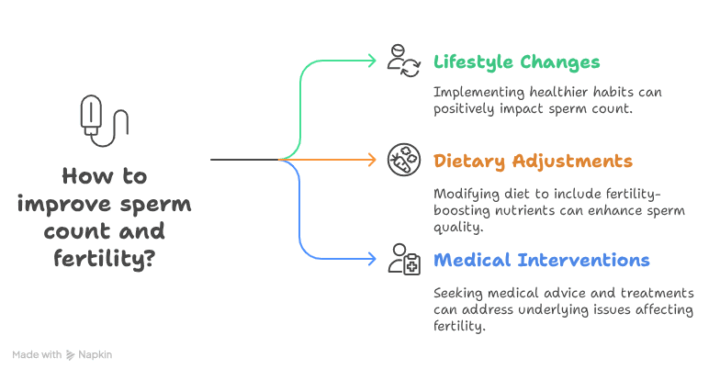 Sperm Count Ways to Improve Male Fertility [2025]
Sperm Count Ways to Improve Male Fertility [2025] 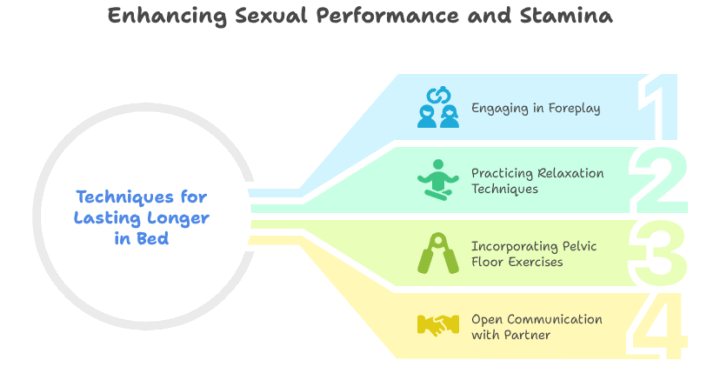 How To Last Longer in Bed Home Remedys That Work [2025]
How To Last Longer in Bed Home Remedys That Work [2025]  Beef Organ Supplements in 2025 [Full Guide]
Beef Organ Supplements in 2025 [Full Guide]  5 Best Fat Burner Supplements [2025]
5 Best Fat Burner Supplements [2025]
Very good
Awesome
Very good
Very good
Very good
Awesome
Good
Very good